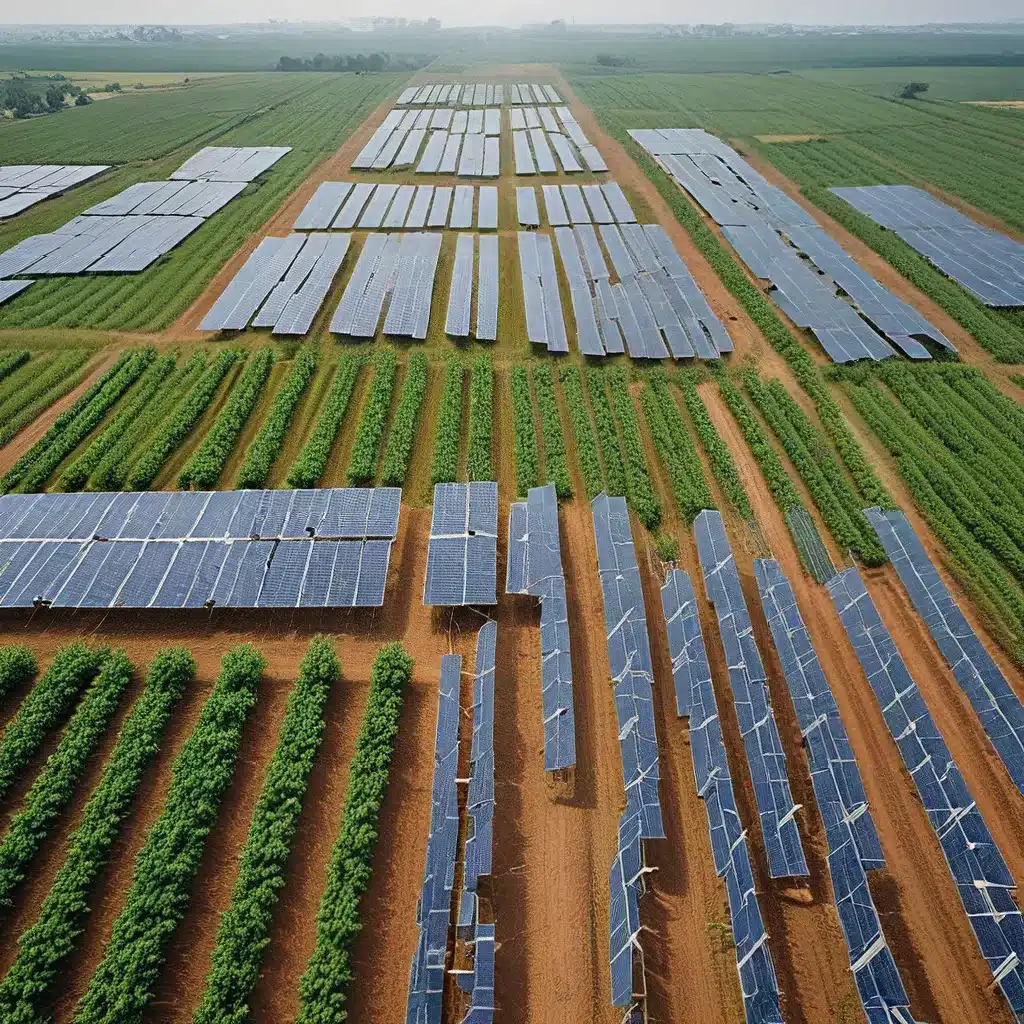
As the world grapples with the urgent need to address climate change, the intersection of renewable energy and agriculture has emerged as a promising frontier for sustainable solutions. In this article, I’ll delve into the fascinating concept of agrivoltaics – a revolutionary approach that harmoniously aligns solar power generation with agricultural production, offering a glimpse into the future of eco-friendly food cultivation.
The Challenges of Traditional Farming
Let’s face it, the traditional model of farming has long been plagued by a myriad of challenges. From the reliance on fossil fuels and energy-intensive irrigation systems to the climate-related risks that threaten crop yields, the road to sustainable food production has been anything but smooth.
I remember the time when my grandparents’ farm struggled with a prolonged drought – the once-lush fields withered, leaving them to grapple with the harsh realities of a changing climate. The anxiety of uncertain weather patterns and the constant need to adapt left them feeling powerless, and I couldn’t help but wonder if there was a better way forward.
Enter Agrivoltaics: A Symbiotic Relationship
It was during this period of uncertainty that I stumbled upon the concept of agrivoltaics, and it was like a beam of hope piercing through the gloom. This innovative approach, also known as “solar sharing,” involves strategically placing solar panels over or between rows of crops, creating a mutually beneficial relationship between energy generation and food cultivation.
The premise is simple, yet ingenious. By leveraging the versatility of solar technology, agrivoltaic systems allow for the simultaneous harvesting of sunlight – both for clean energy production and for nourishing the plants beneath. This symbiotic arrangement not only optimizes land utilization but also offers a suite of benefits that can revolutionize the way we approach sustainable agriculture.
The Transformative Power of Agrivoltaics
As I delved deeper into the world of agrivoltaics, I was captivated by the profound implications it holds for the future of farming. Let’s explore some of the key advantages that make this approach so compelling:
Increased Land Efficiency
Unlike traditional ground-mounted photovoltaic systems, agrivoltaic applications strategically position solar panels to preserve the primary use of land for agricultural activities such as crop cultivation, grazing, or fruit orchards. This design allows for the accessibility of farm machinery and livestock, ensuring that the land can be utilized to its full potential.
Crop Protection and Microclimate Regulation
The solar panels in an agrivoltaic system not only generate clean energy but also provide valuable shading for the crops below. This shading can alleviate heat stress on plants, creating a more favorable microclimate for optimal growth. Moreover, the panels act as a protective shield against adverse weather conditions, safeguarding the crops from the increasingly unpredictable forces of nature.
Enhanced Resilience and Sustainability
By seamlessly integrating renewable energy generation with food production, agrivoltaics paves the way for a more resilient and sustainable agricultural model. This approach aligns with the European Union’s pursuit of the European Green Deal, a landmark initiative aimed at achieving climate neutrality by 2050. As we strive to build a future-proof food system, agrivoltaics emerges as a transformative solution that can help us reach these ambitious environmental goals.
Financial and Operational Advantages
Agrivoltaic systems can also offer tangible financial benefits for farmers. The dual revenue streams from energy sales and crop production can provide a steady source of income, helping to offset the risks and uncertainties inherent in traditional farming. Moreover, the reduced reliance on energy-intensive irrigation and other fossil fuel-dependent practices can lead to significant cost savings, enhancing the overall economic viability of the agricultural enterprise.
Embracing the Agrivoltaic Revolution
As I contemplate the future of agriculture, I am filled with a sense of excitement and optimism. The renewable energy solutions offered by agrivoltaics have the potential to redefine the way we approach food production, paving the way for a more sustainable and resilient food system.
Imagine a world where solar panels and thriving crops coexist in perfect harmony, where the land is utilized to its fullest potential, and where farmers can harness the power of the sun to nurture both their crops and their bottom line. This vision is no longer a distant dream, but a reality that is steadily taking shape.
Challenges and Considerations
Of course, the transition to an agrivoltaic future is not without its challenges. There are complex technical, regulatory, and social considerations that must be navigated with care. Striking the right balance between energy generation and agricultural productivity, ensuring equitable access to the benefits, and overcoming potential land-use conflicts are just a few of the hurdles that need to be addressed.
Ongoing research and pilot projects are shedding light on the intricacies of agrivoltaic systems, exploring ways to optimize their performance and overcome these challenges. As the field continues to evolve, it’s likely that we’ll see new innovations and best practices emerge, further enhancing the viability and scalability of this promising approach.
A Call to Action
As we stand on the cusp of this renewable energy revolution in agriculture, I believe it’s our collective responsibility to embrace the potential of agrivoltaics and champion its widespread adoption. Whether you’re a farmer, a policymaker, or a sustainability-minded individual, each of us has a role to play in shaping this transformative future.
Join me in exploring the exciting possibilities of agrivoltaics, and let’s work together to build a more sustainable and resilient food system that nourishes both our bodies and our planet. The future of agriculture is bright, and it’s powered by the very energy that sustains us all.

